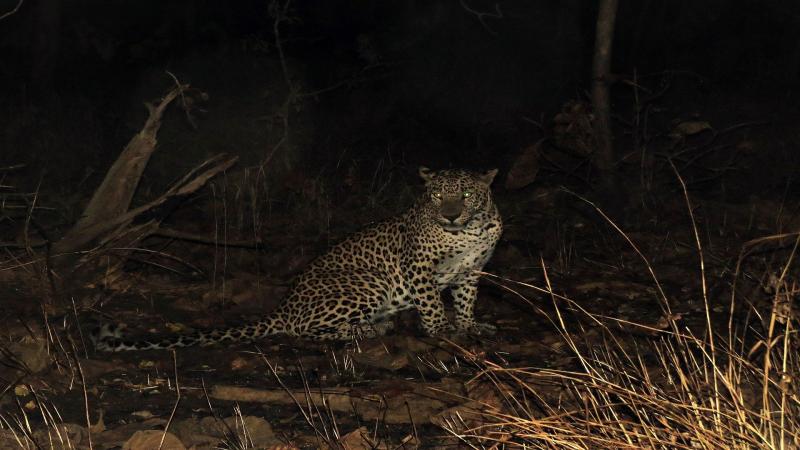
Researchers explore how the two predators coexist by preferring different habitats in Gir
The vast expanse of the Gir National Park in Gujarat is home to the endangered Asiatic lions—the only place where they are found in the wild. The population of these majestic cats has soared from a handful in the 19th century to about 600 in 2017, charting one of the success stories in India's conservation history. Apart from the Asiatic lion (Panthera leo persica), Gir also has a sizeable number of another elusive cat—the Indian leopard (Panthera pardus fusca). For centuries, both these apex predators have coexisted, without much competition for survival despite their high numbers. What factors could be fostering this coexistence?
In a new study, researchers at the Aligarh Muslim University (AMU), Aligarh, have looked into how lions and leopards divide time and space in Gir to coexist. The study is a result of a collaborative effort between the Gujarat Forest Department and the Department of Wildlife Sciences, AMU. The findings of the study, funded by the Ministry of Environment, Forest and Climate Change, was published in the journal PLOS One.
"AMU is monitoring the leopard ecology in Gir from last 18 years under different projects," says Mr Rohit Chaudhary, the corresponding author of the study. Previous efforts at AMU, led by Prof Jamal Ahmad Khan, had resulted in a database of leopard ecology in the past. "These records indicate that both the lions and leopards have high overlap in their diet. It led us to believe that there must be some spatial or temporal partitioning of resources between them," he adds, talking about the motivation of the present study.
Previous studies on tigers and leopards in Asia, and lions and leopards in Africa, had indicated that being active at different times of the day (temporal partitioning) or sharing different habitats (spatial partitioning) helped these cats coexist. However, there was no study on lions and leopards in India so far, and this is the first such study to assess spatiotemporal partitioning between them.
The researchers used camera traps in an area of 200 square kilometres in the western part of Gir. They continuously captured sightings of lions and leopards, and their prey animals, during the summer and winter months of 2017. After sanitising their data and removing duplicates, they had 2003 trap nights, with more leopard sightings than lions. Among prey animals, chital had the highest captures, followed by sambar, wild pigs and nilgai.

A lion and lioness in Gir [Image Credits: By Shiv's fotografia - Wikimedia Commons, CC BY-SA 4.0]
The study found that both lions and leopards were nocturnal animals, indicating that there was no significant temporal partitioning. However, there was a considerable difference in the types of habitats they preferred. The lions were mostly found in open and dense habitats. On the contrary, the leopards preferred dense habitats and avoided open habitats. The researchers opine that dense habitats create a good cover, thus reducing the encounters between leopards and lions.
The researchers also analysed how lions and leopards overlapped with the prey species, both spatially and temporally. Sambars are the preferred prey of both leopards and lions, while lions also preferred wild pigs. The study found that leopards shared their habitats with sambars and wild pigs while lions shared their habitat with chital and nilgai. So how then do lions hunt their favourite prey?
"Prey animals may venture into lion habitats, which could provide the lions with an opportunity to kill," explains Mr Choudhary. Since the lions, sambars and wild pigs are all active during the nights, it may increase the chance of encounters between a lion and its prey.
The findings show how habitat preference could play a significant role in fostering coexistence between two large carnivores.
"Both lion and leopard exist at high densities in Gir. Habitat heterogeneity has an important role in the coexistence of both predators," remarks Mr Chaudhary. "However, habitat preference and its use are not the sole reason for coexistence between leopards and lions. There might be other reasons too," he cautions. The researchers stress the need for thorough monitoring of the habitats inside Gir as habitat changes have severe implication on this coexistence. “Any change in the future could have implications on this balance," he signs off.
This article has been run past the researchers, whose work is covered, to ensure accuracy.





